
Daghestan

Woman's belt
Daghestan. 19th century
Silver, stamped and gilt, with inlays of coloured cut glass, filigree, granulation and mock granulation;
leather. 7 × 81 cm. Inv. No. 5803 III
Acquired in 1970 from a private collection. First publication.
Silverwork was a highly developed craft all over Daghestan, particularly in mountainous regions. It had an age-long history and inherited certain artistic traditions from the ancient Bronze culture. Almost in every village of these regions there were silversmiths who produced articles of every imaginable kind.
They were perfectly at ease with various techniques of metalwork and displayed virtuoso workmanship in engraving, chasing, nielloing and filigree work, in gold and silver incision, granulation and stamping. Silverware from Daghestan can be said to possess a marked uniformity of style and decor set off by various local particularities.
This belt is a characteristic example of Lakk jewellery. Jewellers of this ethnic group, in contrast with those of Dargin and Avar stock, produced luxurious polychrome articles lavishly decorated with filigree and granulation and set with gems and coloured glass. Their articles sometimes seem somewhat overloaded with minute decorative details.

Amulet
Village of Kubachi, Daghestan. 19th century
Silver gilt, with filigree, granulation, mock granulation and with inlays of cornelian, coral and mother-of-pearl.
Height 9 cm, width 6.5 cm. Inv. No. 5665 Ill
Acquired in 1969 in Kubachi. First publication.
The village of Kubachi is one of the oldest and best known artistic centres of Daghestan. Its most renowned craft has always been silverwork. Local jewellers were famous for the magnificent cold steel and ornaments they produced. Among personal ornaments for women made by the Kubachi craftsmen various amulets held a special place. They were regarded as a protection against evil spirits.
Characteristic of silverware manufactured in Kubachi is their exquisitely fine ornamentation which covers the entire surface of the articles. A generous and skilfully applied granulation sets off details of the design.
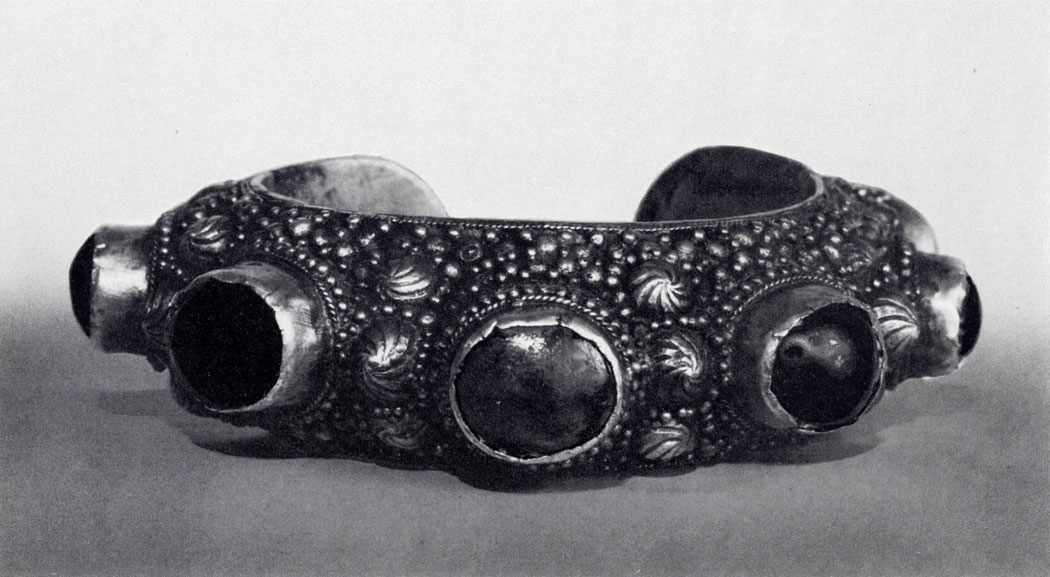
Wedding bracelet
Village of Kubachi, Daghestan. 19th century
Silver, with filigree, granulation and mock granulation, set with cornelian, agate and jasper.
10.3 × 8.5cm. Inv. No. 27262
Acquired in 1973 in Kubachi. First publication.
Ornaments from Kubachi are distinguished by their massiveness and sculptural plasticity. At the same time their forms are extremely varied and well-balanced, for local craftsmen have always had a real feeling for silver and have been skilful at setting off their material to the best advantage.
The massive wedding bracelet reproduced here is a typical article of its kind. Its archaic forms are heavy, and their heaviness is enhanced by the numerous gem studs.
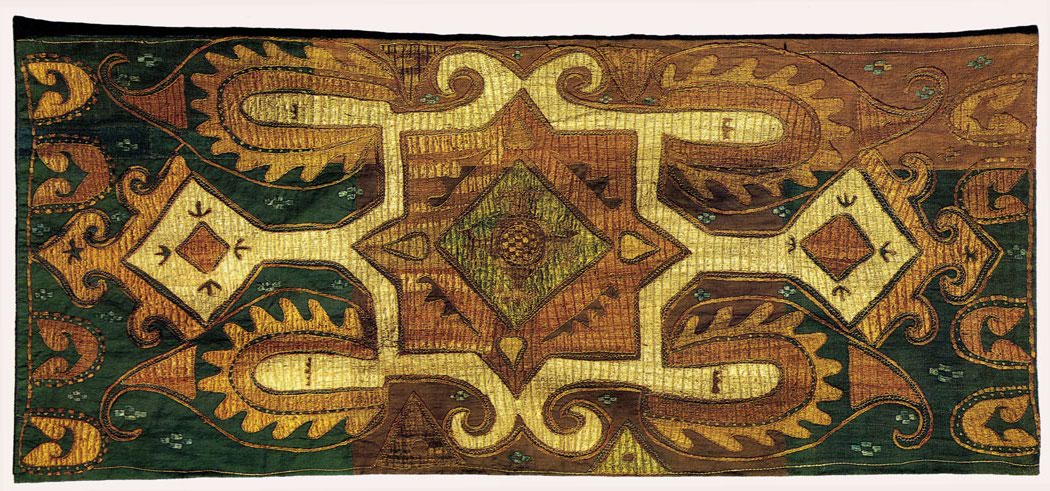
Front side of a pillow-case
Daghestan. Last 18th century
Cotton, untwisted silk, with couched satin-stitch embroidery in silk.
120 × 60cm. lnv.No.101 III
Acquired in the 1920s from a private collection.
Embroideries of the so-called Kaitag type (Kaitag is a village in Daghestan well known for its embroidery) are unique in that they are no longer produced, and the surviving articles are rarely found even in museum collections. Such embroideries used to decorate the front sides of pillow-cases. The pillowcase itself was made of cotton patches of all sizes, colours and shapes, for the "cotton famine" made Daghestan needle-women thrifty of material for their work. Only natural dyes were used in Kaitag embroideries, and, as a result, their colouring is pleasantly subdued and the colour range smooth and mild. To avoid excessive use of expensive imported silks the embroideries were executed in couched satin-stitch over the foundation of untwisted silk. The embroidered decor of these articles often incorporated scraps of varicoloured fabrics which added a picturesque and original touch to the satin-stitched surface with its play of golden-brown and green silks.
Kaitag embroideries display elaborate geometric and geometrically stylized plant ornaments which derived their semantics and symbolism from ancient beliefs and mythology.
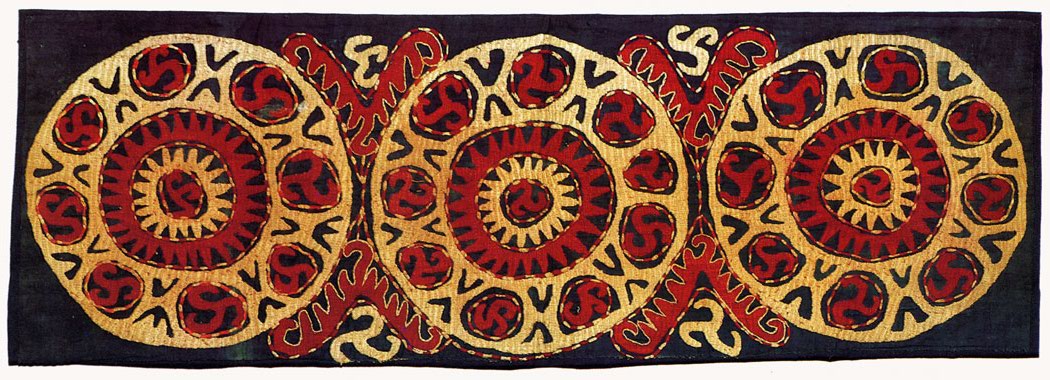
Front side of a pillow-case
Daghestan. 19th century
Cotton, untwisted silk, with couched satin-stitch embroidery in silk.
90 × 30 cm. Inv. No. 2826 III
Acquired in 1944 from a private collection. First publication.
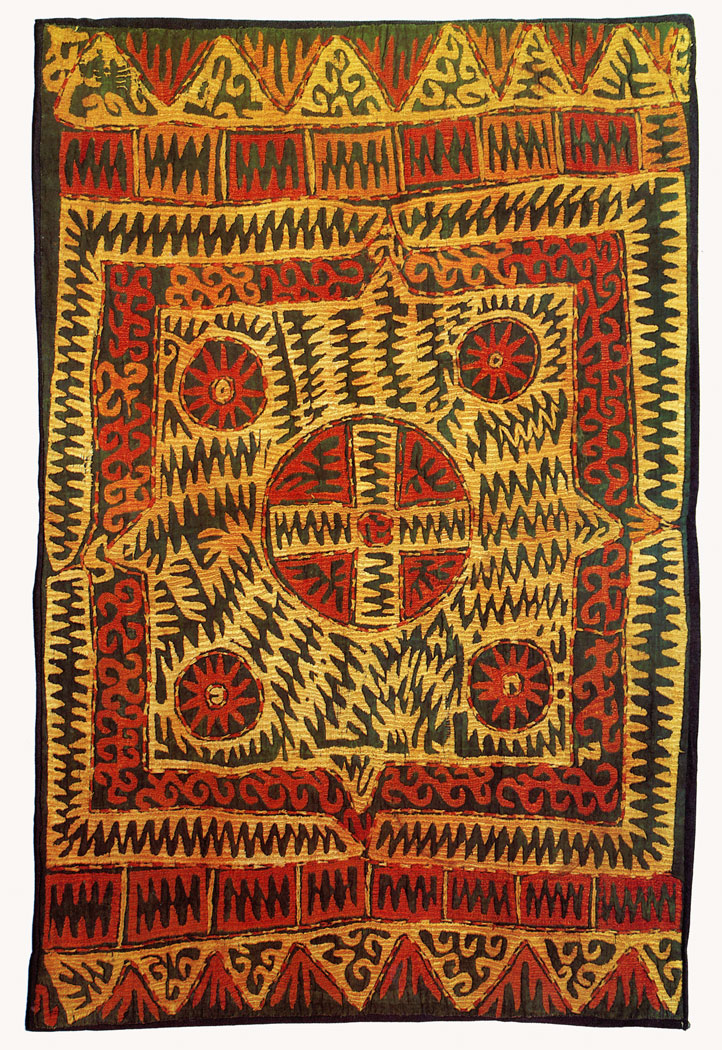
Front side of a pillow-case
Daghestan. 19th century
Cotton fabric, untwisted silk, with couched satin-stitch embroidery in silk.
90 × 60 cm. Inv. No. 2827 III
Acquired in 1944 from a private collection. First publication.
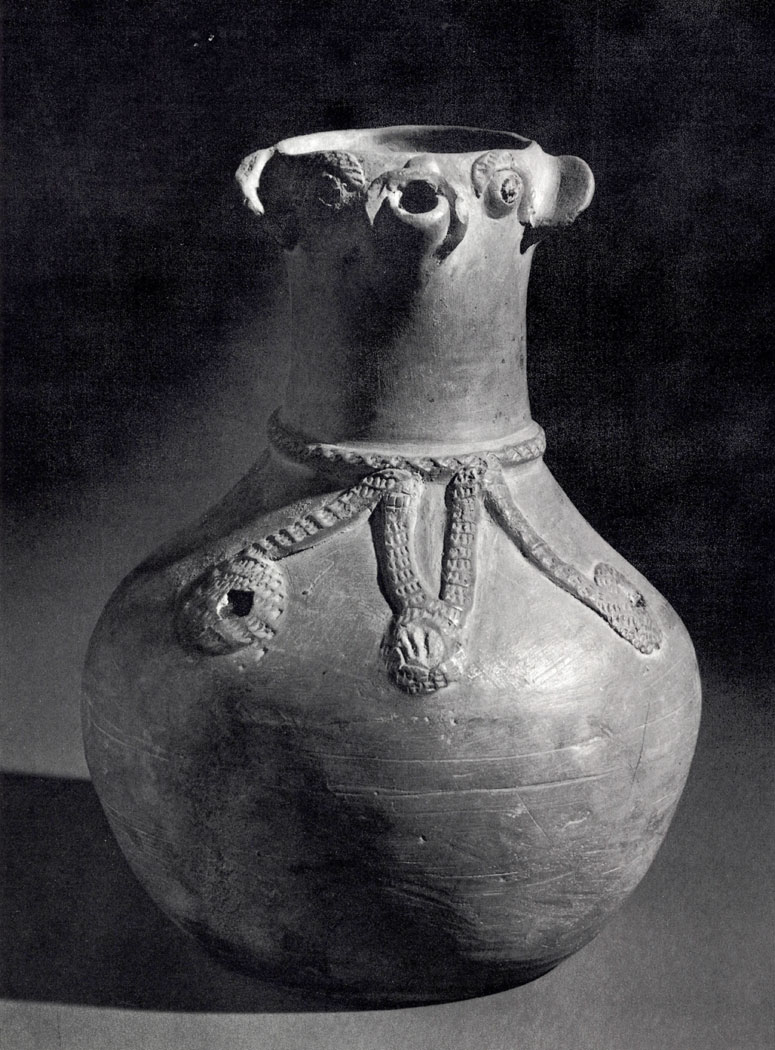
Pig-shaped jar
Village of Khuri, Highland Daghestan. 9th or 10th century
Hand-modelled clay, engraved, with paste inlays.
Height 18.5 cm, diameter 5.5 cm. Inv. No. 5348 III
Acquired in 1966 from the E. Kilchevskaya collection.
During the early Middle Ages the making of thin-sided hand-modelled pottery was a widely practised craft in central parts of Highland Daghestan. Among the surviving examples a special place belongs to the pig-shaped jars of the kind illustrated here. The pig was apparently a sacred animal in this region. This vessel possesses a sculptural plasticity of form brought out by its thoroughly burnished surface decorated with reddish slip. The surface serves as a splendid background for the applied and engraved details-the plait with its scroll-shaped swirls encircling the neck of the jar and the eyes inlaid with coloured paste.
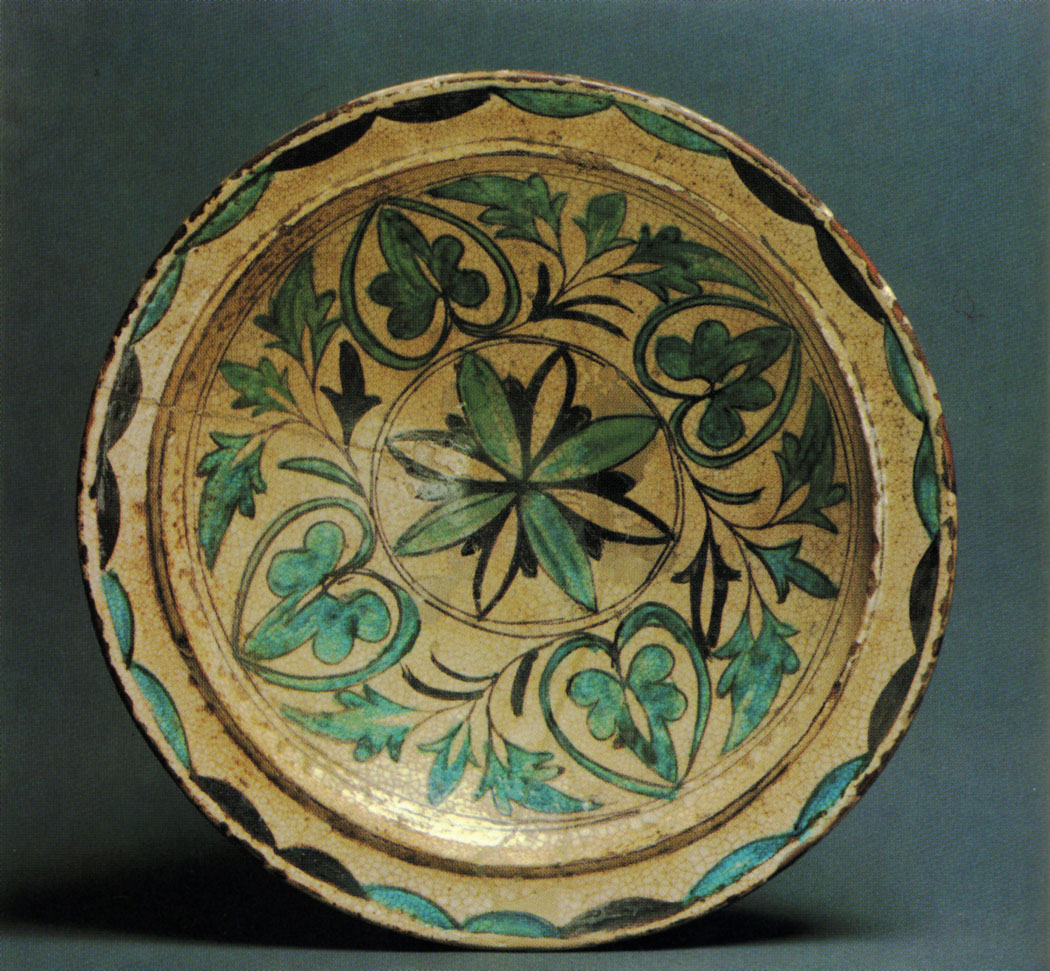
Dish
Village of Kala, South Daghestan. 13th or 14th century
Clay, painted and glazed.
Height 11 cm, diameter 43 cm. Inv. No. 5350 III
Acquired in 1966 from the E. Kilchevskaya's collection.
The village of Kala was the major centre of producing painted and glazed pottery in medieval Daghestan. Pottery-making had been practised there up until the Mongol invasion of the early 13th century but was afterwards never resumed.
The Kala potters produced a wide range of articles: various jugs, decorative and simple household dishes, etc. The dishes are mostly large, with a marked plasticity of form; they are decorated with stylized palmettes and pointed leaves painted in brown manganese on a white background and later covered with turquoise-green cupric oxide. The unrestrained manner of painting and its skilful arrangement on the rounded surface of the dishes testify to the superb workmanship of local craftsmen and a highly developed art of ornamentation. Ceramics from Kala undoubtedly hold a place of honour among the examples of stylistically related pottery of the same period from the Near Eastern countries.
|
ПОИСК:
|
© MUSEUMS.ARTYX.RU, 2001-2021
При использовании материалов сайта активная ссылка обязательна:
http://museums.artyx.ru/ 'Музеи мира'
При использовании материалов сайта активная ссылка обязательна:
http://museums.artyx.ru/ 'Музеи мира'